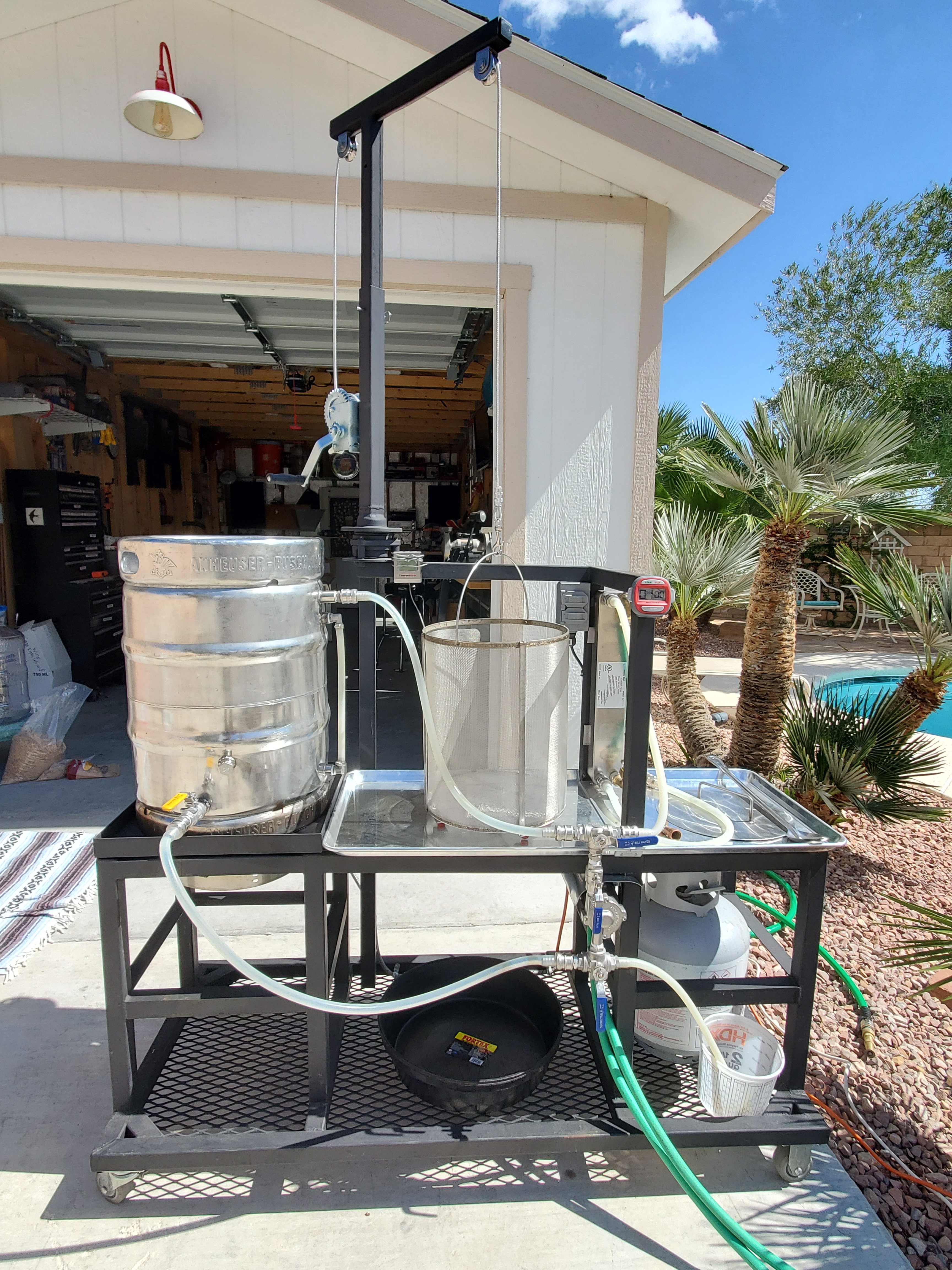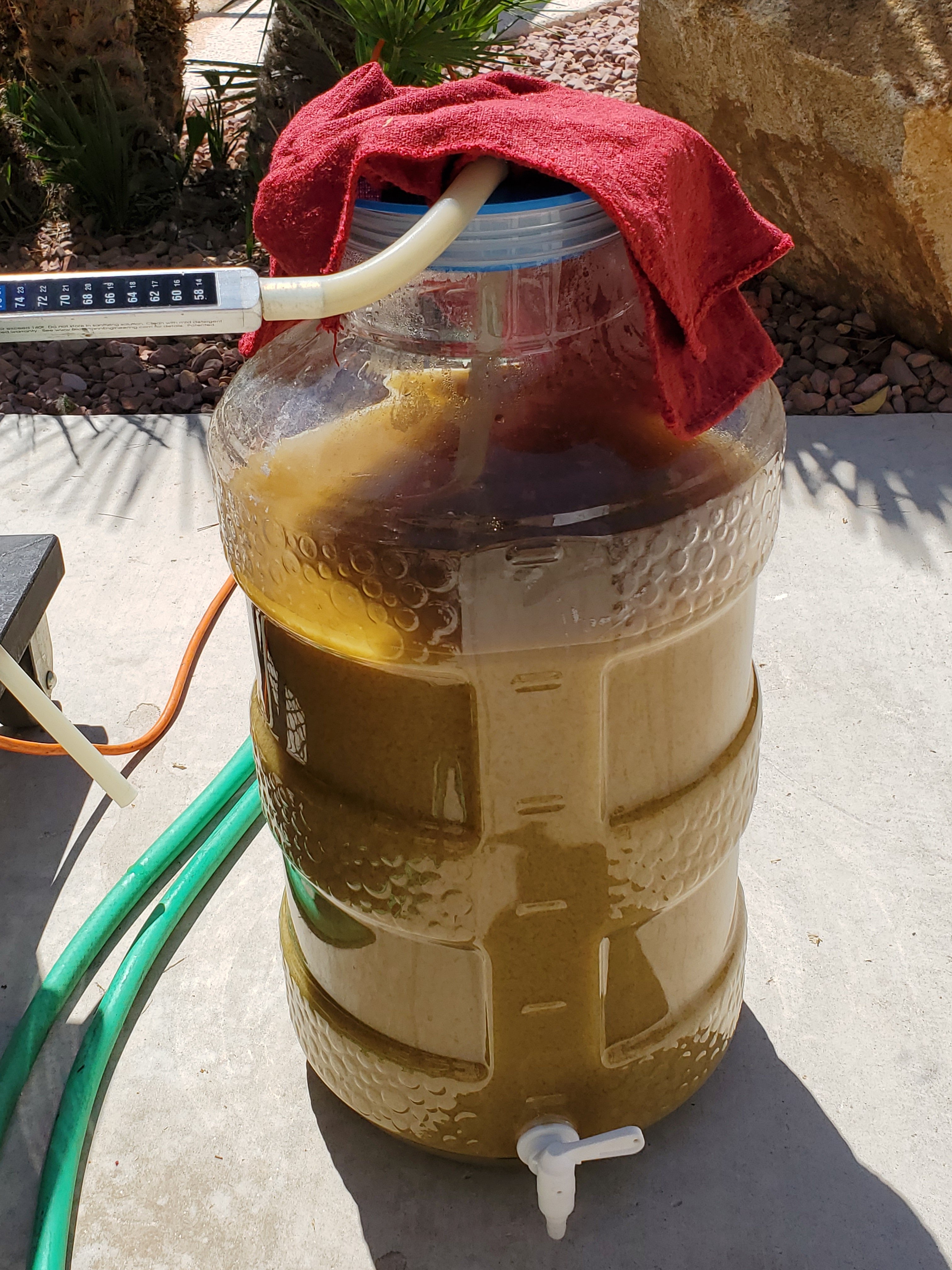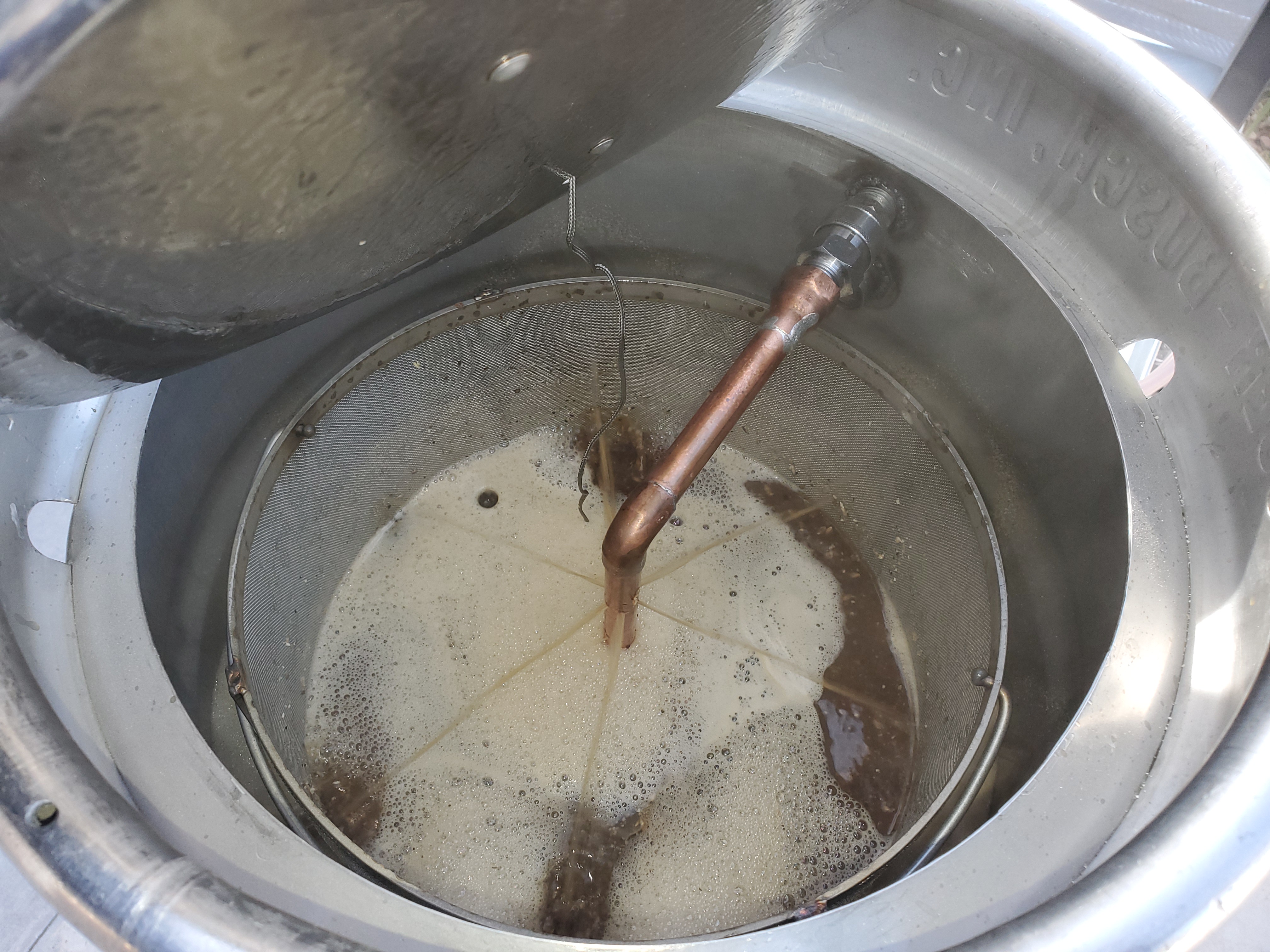Well yesterday was the first day I attempted to use my grain basket for the dual purpose of hop spider, and it worked. My grain basket is stainless steel with a 12.5" diameter, is 15" tall, and has 800 micron mesh. It just fits into my 15.5 gallon Keggle, and has 1.5" feet to keep the basket off the Keggle bottom. This grain bill was 13.5 lb., and I have room for quite a bit more. As you can see my system recirculates during the mash with an infusion pipe centered in the mash. The recirculation pipe works very well, and so far (twice) I have had complete conversions in 30 minutes. (The first brew was a Pete's Wicked Ale clone, which turned out great - 75% efficiency). After the mash conversion was complete I drained and emptied the grain basket and lowered it back into the Keggle and proceeded to boil. I used 2 ounces of hops during the boil, and as you can (sort of) see in my pictures (sorry about the order) the wort inside basket was boiling, and the temperature inside and outside the basket was 212F. After the boil I lowered the wort temperature to 175F for a hop stand, and added 8 ounces of hops (this is a New England IPA recipe) for 15 minutes. Then I lifted the basket to drain, and chilled to 70F through my plate chiller with no clogging. I got a lot of hop trub in the fermenter but that has never been a problem; it settles out. I am very please with this setup and results.


















Last edited:



